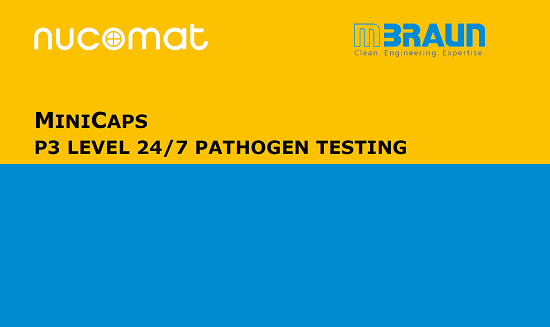The last few decades have seen considerable advancements in automated systems for analysing pharmaceuticals, minerals, petrochemicals, oleochemicals, and fast-moving consumer goods.
Companies across these different industries are discovering the benefits of integrating some degree of automation within their laboratories, whether it’s for a single step of the process or through the entire workflow.
Most notably, robots ensure consistency, accuracy and thus reliability and can operate at higher speeds and for lengthier durations, leading to advantageous quality and productivity gains.
In the pharmaceutical industry – where high-quality and efficient processes are less an advantage and more a requirement – automation, robotics and artificial intelligence (AI) have huge potential. Across the industry, companies are realising that automation has a key part to play in achieving business goals, allowing more consistent laboratory behaviours across different sites.
Research by leading insights and data business GlobalData shows that pharma businesses are increasingly keen on hiring people with skills in AI and robotics, with GlobalData’s unique job listings database showing a rapid increase in pharma companies listing jobs in these categories over the last two years.
As the emphasis on such technologies heightens every year, it’s clear to see why an increasing number of pharmaceutical quality control laboratories are investing in autonomous sample preparation, handling and testing solutions. Not only can robots perform tasks to a far greater degree of accuracy, they also promote a more sterile laboratory, with fewer contaminants due to fewer humans. Skin and hair remain some of the main causes of contamination in sterile environments. But there’s another very important reason to consider automation for the laboratory, and that’s worker safety.
Automated laboratory equipment and safety
Keeping workers safe is a daily challenge for all manufacturers. Mistakes can be mitigated through procedural safeguards and personal protective equipment (PPE), however the only way to completely eliminate the risk is to remove humans from the process.
The importance of automation in laboratory settings is that, unlike humans, automated systems never get tired nor make mistakes. There is no concern that tiredness may creep in towards the end of a shift. Indeed, a fully automated system can avoid shifts and operate around the clock.
As long as they are programmed correctly, the chance for errors and accidents to occur is removed. Instead, consistent levels of precision are ensured, raising the quality of the operation while also taking the burden away from workers and keeping them safe from accidents.
In certain industries, this also means protection from toxic or hazardous materials. In pharmaceutical laboratories, using automated solutions for handling samples safeguards human operators from exposure to biohazardous material and protects them from performing potentially harmful operations.
The screening of cell culture-based pathogen assays is one example. In the past year and a half, the outbreak of Covid-19 has made it clear that the industry needs fast and flexible research capacity to develop assays for new pathogenic agents and screen for molecular targets with therapeutic activity.
Developed by laboratory automation solutions provider Nucomat, the MiniCaps automated pathogen assay platform conforms to the highest standards of biosafety, ensuring operator and environmental safety while offering flexible multi-assay operation behind a sealed enclosure.
Fully automated systems in clinical laboratory settings - reducing the strain on workers
Many tasks involved in laboratory analysis are repetitive. They can be tedious and time-consuming for a human workforce and cause the potential for staff to develop a repetitive strain injury (RSI) in the fingers and hands, as well as possibly leading to carpal tunnel syndrome in the wrist.
The constant handling of vials, including capping, uncapping, filling and labelling activities, is a big offender of this in the pharma space. Automated systems for filling and labelling decrease the risks of workers experiencing strain injuries.
Nucomat’s Automated Reagent Filler delivers precise and reliable small-volume vial filling inside a safety enclosure for sterile conditions. The system is ideal for accurately filling batches of research-grade reagents and kit solutions in screw-cap vials.
The Belgian company also offers an Automated Labeller and Dispenser system which takes care of repetitive capping, uncapping and labelling activities efficiently. The incorporation of sealed enclosures and locks on these systems protects operator safety by interrupting production upon unauthorised openings of the doors.
There are so many reasons to consider automation in the laboratory, but the positive impact on worker safety should not be overlooked. A lot of the equipment Nucomat has built for its pharmaceutical clients has been to assist in research and development work, often in the form of an automated platform for High Throughput Experimentation (HTE).
As the industry develops, automation will play a very important role in protecting laboratory personnel, and solutions providers like Nucomat will be valuable partners as pharmaceutical companies look to embrace a digital transformation in and outside the doors of their laboratories.



